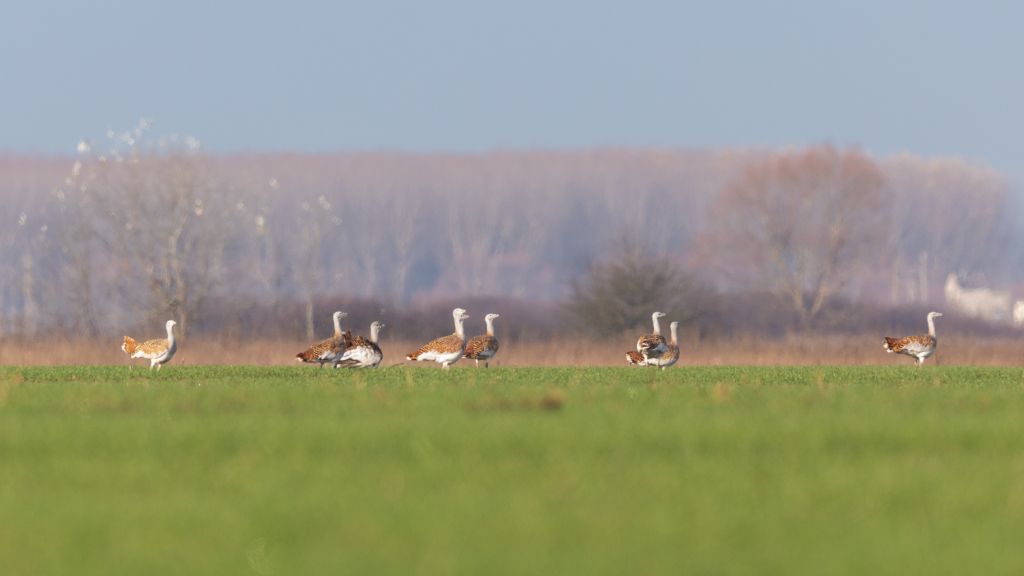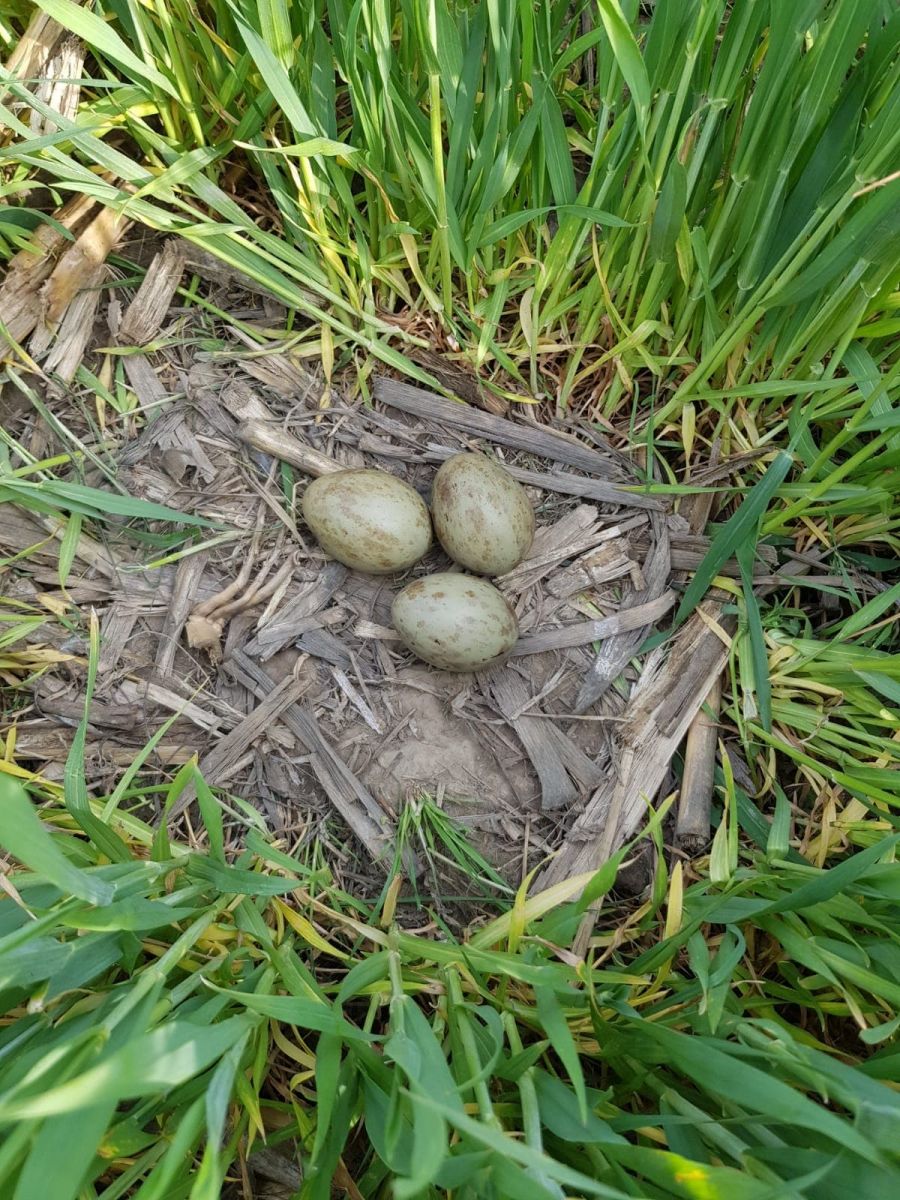The rehabilitation of the reed lake, a swamp that had become eutrophicated in the Culișer meadow, located in Salonta, Bihor county, has been carried out in the past 3 years within our project based on cross-border public-private partnership.

The Great Bustard Population of Salonta
4 May 2018

Did you know that the bustards in the area of Salonta are the only viable Great Bustard population in Romania?
According to the IUCN (International Union for Conservation of Nature), the Great Bustard is globally a vulnerable species and already extinct in many European countries where it was considered a native species. In Romania, it faced a massive decline since the 1920s and, as a consequence, in recent years, it was possible to see bustards only in the Western Romanian Plain.
Our on-location observations from over a decade confirm the presence of a cross-border population in Salonta area (Bihor county), near the border with Hungary, and includes about 40-50 individuals. From a conservationist point of view, such a population is at a critical stage and measures are required to ensure its stabilisation.
Landscape, habitat, food
The bustards in Salonta use grasslands, oilseed rape, lucerne, cereal fields, fallow and more rarely maize and sunflower fields. Proper distribution of these lands has contributed to the sustenance of a viable population in the area.

The conservation of grasslands is very important as these represent vital breeding, feeding and resting grounds. It is also here that the male bustards have their spectacular display.
Oilseed rape is the main food source during winter. In the most favourable spots of these plots, bustard droppings can be found.
Lucerne fields are important feeding and nesting sites. In conditions of drought, oilseed rape may dry, thus increasing the role of lucerne, especially as a winter food source.
Fallow and green fallow lands may be suitable places for feeding and nesting.
The plots with small-grain cereals are the most widely spread around Salonta and may be used as secondary nesting sites. Because of the plant's height, maize and sunflower plots are less important. However, they can be used when moulting as they can provide worthy hiding places and shade in hot summer days.
Breeding and chick-raising
The main display site is a grassland stretching between the city and the border. It is used for grazing by sheep and cattle, but these usually don't disturb bustards. These birds prefer grasslands grazed by sheep as they leave very small grass and so the males can be noticed more easily. The bustards prefer not only smaller grass, but also higher grounds, where the females may quickly spot the males.
Agricultural mosaic landscapes that comprise of grasslands and arable lands are auxiliary display sites. Based on our on-location observations in Salonta from over the last decade, the largest display group was made up of three males and four females. The display ground is on Hungarian territory, in Mezőgyán. Following the actual mating, females may be seen near the display ground looking for the best nesting location.
The presumed nesting location, identified in 2018, is in a wheat plot surrounded by grassland.

Salonta, 2020. Photo: Ioan Matiu jr.
The Great Bustard nest found in May 2020 by Ioan Matiu jr. was also in a wheat plot.
Just like all over Europe, agriculture in Salonta plays an important role in the bustard's life: applied agricultural techniques, plot size and crop composition. In addition to grassland conservation, it is of utmost importance that the cultivation of oilseed rape and lucerne are chemical-free. In the absence of sufficient insects, chicks cannot survive the first two weeks and adults will not be able to find high-energy food during difficult times.
Threats
The Great Bustard population in Salonta is mainly threatened by mechanised agricultural works. Irrigation and spraying with chemicals mean additional disturbance and the chemicals destroy the population of invertebrates.
.jpg)
Photo: Nagy Attila
Various harvesting works, such as motorised mowing of lucerne or harvesting the barley are real dangers to the nesting females. Barley is harvested when the chicks are still unable to fly, therefore they cannot escape from the agricultural machines.
Other than the above-mentioned threats, other dangerous aspects may be the prevalence of unbeneficial crops (corn, sunflower), intensification of agriculture and grassland conversion into arable land.
During the nesting time, hunting activities (especially for deer) that do not take into consideration the presence of the bustards in the area, may negatively affect them. The medium and high-voltage power lines act as barriers causing more fragmentation of the Great Bustard habitat. In reduced visibility conditions, the collision of these large birds with power lines may be fatal.
Conservation opportunity:
Some steps have already been made for the conservation of Great Bustards in Romania:
• it has been designated a Natura 2000 protected area. It is near Salonta, bears the code ROSPA0097 and it has been named Cefa Fishery-Rădvani Forest. The delimitation of this protected area is far from being ideal as it does not include the entire habitat used by the bustards. In 2016, changes were made to the Standard data form, but the proposed extensions to the area had not been accepted. Nonetheless, at least a part of the bustards’ habitat is protected and the investments with potential negative impact can be regulated.
• Starting with 2017, a new agro-environment package, developed by Milvus Group, that ensures compensatory payments for farmers who choose to manage their lands by using bustard-friendly farming practices. These payments are eligible for farmers operating in the Salonta area only for arable land because there's another package available for grasslands, i.e. for the conservation of the Red-footed Falcon.
- The text is an excerpt from “The Mysterious Bustard” (available in Hungarian and Romanian).
- Authors: Kelemen Katalin, Nagy Attila and Papp Judith (Milvus Group)
- Photo credits: Milvus Group

